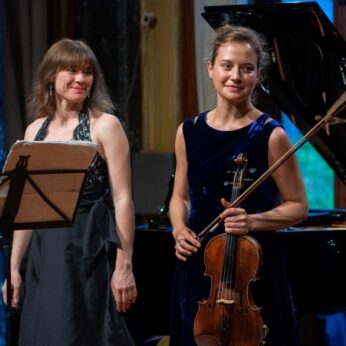Composer: Robert Schumann (b. 1810 - d. 1856)
Performance date: 01/07/2022
Venue: Bantry House
Duration: 00:12:30
Recording Engineer: Eduardo Prado, Ergodos
Instrumentation: va, pf
Instrumentation Category:Duo
Artists:
Dana Zemtsov -
[viola]
Anna Fedorova -
[piano]

Fantasiestücke, Op.73
The term Fantasiestücke appears so many times in Schumann’s oeuvre that we are all entitled to get a bit confused. There is the added complication that works like this exist in versions for cello and violin as well. There are also two separate works for piano solo as well as the piano trio under the same title. Then there are two works simply called Fantasie, all of which adds up to a composer obsessed with the romantic power of imagination as opposed to the classical concern for form.
These three movements date from 1849 when Schumann was composing a series of miniatures for solo instruments with piano, possibly as a way of entertaining Clara, his wife, who was a spectacular concert pianist and was finding the endless demands of an ever-growing family increasingly frustrating. The commercial attraction of Hausmusik to publishers must also have weighed in the balance, the Schumann household was always under financial pressure. The original title was apparently Soiréestücke, perhaps an attempt on Schumann’s part to focus on the social value of these magical pieces. Heinrich Heine wickedly defined a soirée as enough light to provide illumination, enough mirrors to see your own reflection, enough people to be jostled hotly, enough sugared water and ice to cool down again.
The three pieces are played without a break, which makes it clear that the three ternary shaped pieces were intended as a continuous suite. They change in mood from the wistful nostalgia of a transfigured song in A minor to the sunnier A major of the second piece with its wide leaps and echo-like trio. The third piece is governed by an urgent, impulsive ascending theme recalling the trio from its predecessor, while a quieter trio is needed to calm its impetuosity.
Francis Humphrys
Copyright © 2025 West Cork Music. All rights reserved.
Designed and developed by Matrix Internet